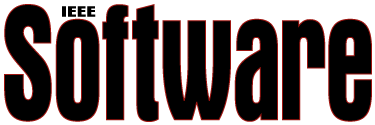
Menu:
Important dates
Submission Deadline:
August 1, 2014
Publication Date:
March/April 2015 (Vol. 32, No. 2)
1st Special Issue on Release Engineering
Software used to be released in shrink-wrapped form, but the advent of agile methodologies and the web has overhauled the landscape. For example, a project like Mozilla Firefox releases every 6 weeks, generating updates for dozens of existing versions on 5 desktop, 2 mobile and 3 mobile desktop platforms, each of which for more than 80 locales. In other words, deployment of modern applications requires coordinating the release of applications on multiple mobile platforms, web platforms with centralized backend services, and native desktop clients. Furthermore, concepts like continuous delivery of software are no longer curiosities, but essential to retain a competitive edge.
Release engineering deals with all activities in between regular development and actual usage of a software product by the end user, i.e., integration, build, test execution, packaging and delivery of software. Although research on this topic goes back for decades, the increasing heterogeneity and variability of software products along with the recent trend to reduce the release cycle to days or even hours starts to question some of the common beliefs and practices of the field.
The IEEE Software Special Issue on Release Engineering solicits experience reports and papers on tools, methods, practices and techniques to streamline release engineering. We especially welcome submissions targeting recent challenges like continuous delivery and heterogeneous platform support, but the Special Issue is open to any of the following topics:
- best practices for code movement (branching/integration)
- continuous integration and testing
- build and configuration of software
- build system maintenance
- testing and reporting infrastructures
- package and dependency management
- legal signoff and bill-of-materials
- delivery and deployment of software
- code signing and certificate management
- continuous delivery, deployment, installation and software update
- cloud provisioning and management
- cloud service release management
- interaction with app stores
- mobile app release management
- principles and automated techniques for release planning
- release engineering for product line systems
- devops and interaction with developers, end users, etc.
- devops practices and tools
- large-scale build and test farms
- multi-platform build and test
- feedback on continuous delivery and deployment
The goals for this Special Issue are three-fold:
- making researchers aware of the challenges and research opportunities and practitioners aware of research in release engineering
- sharing experiences with practical approaches, tools, methods and techniques for release engineering
- building connections between different communities involved in release engineering.
In an effort to engage with practitioners, one of the co-organizers of the Special Issue is a release engineer at Mozilla and one half of the reviewers will consist of release engineers, so we guarantee that each paper or abstract submission receives at least one review from a practitioner.
Full submissions for the Special Issue must not exceed 5,400 words including figures and tables, which count for 200 words each. Submissions in excess of these limits may be rejected without refereeing. The articles we deem within the theme and scope will be peer-reviewed and are subject to editing for magazine style, clarity, organization, and space. We reserve the right to edit the title of all submissions. Be sure to include the name of the theme or Special Issue you are submitting for.
We also solicit short “practice” papers from practitioners that contain experience reports. These papers do not need to make a research contribution, but should instead present the experiences of a practitioner or practitioners by describing things such as current release processes used, challenges faced, solutions attempted, and/or results obtained. Practice papers should not exceed 3,500 words.
Articles should have a practical orientation and be written in a style accessible to practitioners. Overly complex, purely research-oriented or theoretical treatments are not appropriate. Articles should be novel. IEEE Software does not republish material published previously in other venues, including other periodicals and formal conference/workshop proceedings, whether previous publication was in print or in electronic form.
Articles should be submitted through the IEEE Software manuscript submission site at: https://mc.manuscriptcentral.com/sw-cs. Select "SWSI: Release Engineering" as the Manuscript Type.
For more information about the focus, please contact the Guest Editors:
- Bram Adams, Polytechnique Montréal, Canada
- Stephany Bellomo, SEI, USA
- Christian Bird, Microsoft Research, USA
- Foutse Khomh, Polytechnique Montréal, Canada
- Kim Moir, Mozilla, Canada
For general author guidelines: www.computer.org/software/author.htm
For submission details: software@computer.org